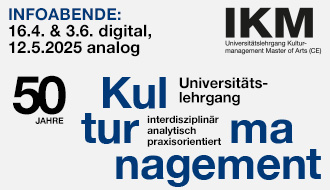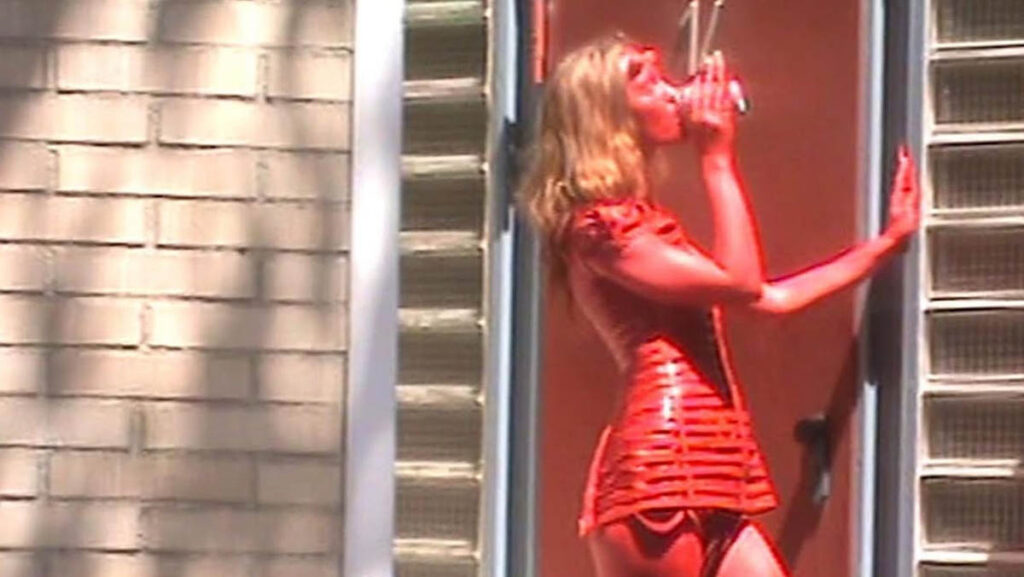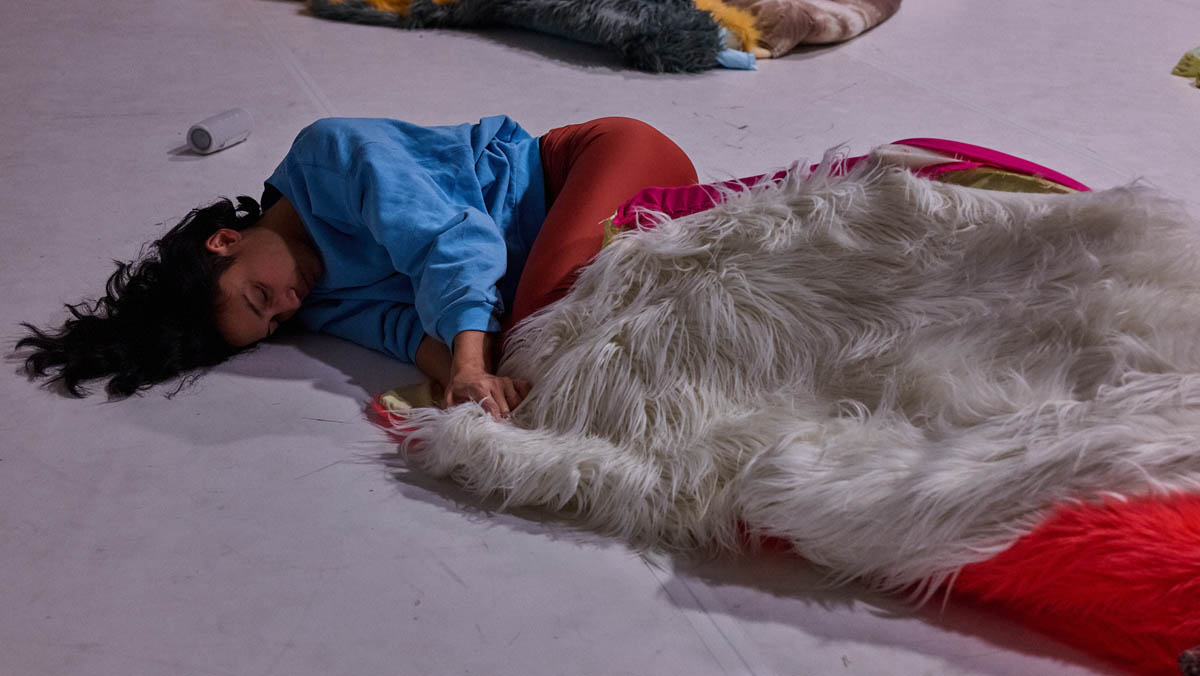
Erka Shalari: I’d like to begin our conversation by discussing your latest performance. How did it feel to perform it in these two different spaces, and how does the architecture shape or influence your performances?
Lisa Hinterreithner: Many of my performances or performance installations mingle audience and performance spacially. I often want the audience to be part of the setting and I am fond of a closeness that allows an almost “intimate” observation or being with. Besides this spacial arrangements between performance and audience the architecture of the space plays a significant role in the process of making. The shape, structure and atmosphere of a space profoundly influence my work. In padded both venues had a similar architecture and both locations were historically not designed as art spaces. One functions as a public exhibition space, and the other as a studio space – neither are theatrical places, which I found important for padded. Nonetheless, creating the atmospheres I was looking for took quite some time.
How do ideas typically come to life, and how was it in the case of padded?
Usually, new ideas are follow-ups of previous ideas and all belong to a pool of interests that accompany one’s work for a longer or shorter time (sometimes for a very long time.) And all of these ideas mingle with one´s current life situations, right? So I think the idea for a new work is a rather complex procedure, at least for me. My interest in touch and closeness between humans and more than humans has been part of one of these long-term interests. For five years I have been working on sensorial relationships that humans might experience with more than humans. Be it plants like in This is not a garden (2022), or soil in Underfoot (2023) or fabrics in LINGER ON (2021) and now in padded. How did I get there? I think an important moment was my research in the context of New Materialism more than ten years ago. At that time I studied in London and since then I have been strongly interested in the idea of interspecies connectedness in one or the other way. I think this time meant a turning point for my performance work.
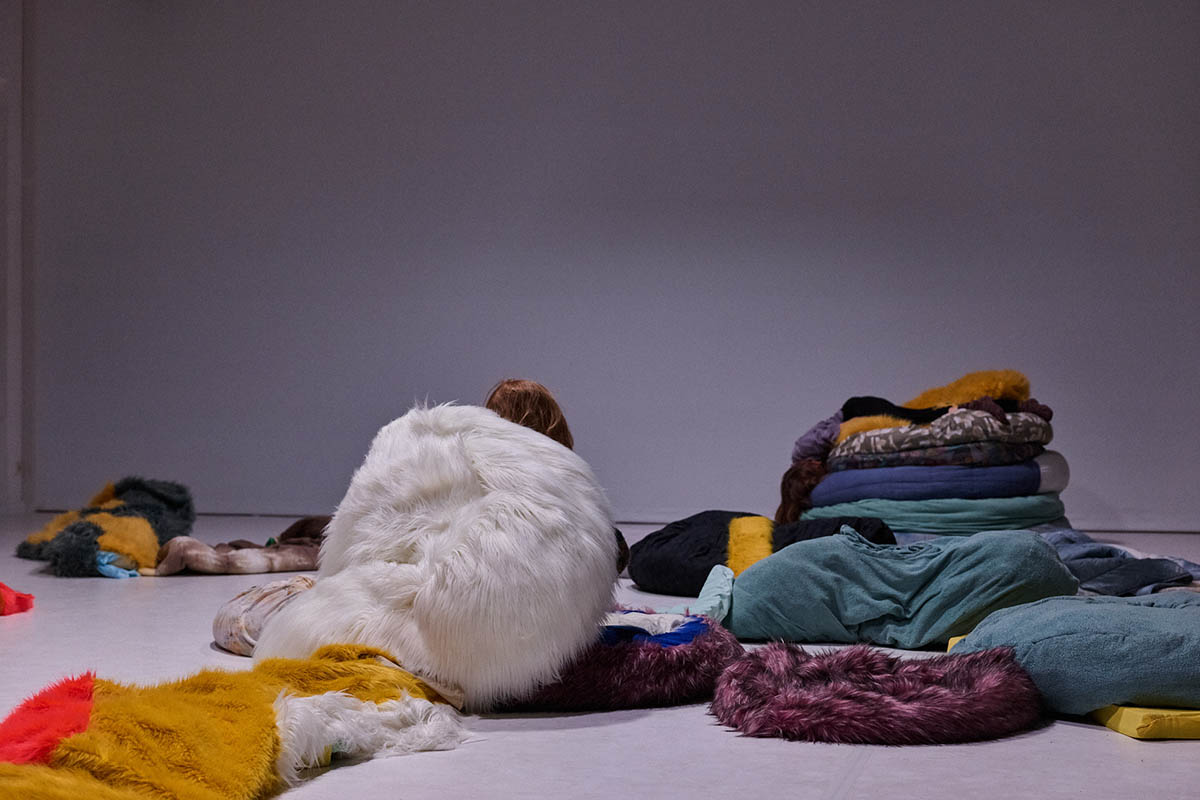
Concerning padded the specific idea of shelter spaces was very much linked with my strong desire for emotionally care space and safe(r) spaces to live in and with. It also links to my closeness to feminist writers and scholars. My desire and lack of feeling protected. Being sheltered. I wanted to search for a human and material performativity that expresses this need in a speculative, playful, soft and tender way.
You’ve been exploring themes of retreat, rest, regenerative spaces, and safe havens in your practice for over a decade. What was the first time you did start to think on these thematic?
It started in a residency in 2019, though probably it started earlier, but somehow I started at this residency at Cité Internationale des Arts in Paris when I delved into my interest in passivity. The performative concepts of doing less or doing nothing and resting became highly appealing to me at that time and they still are.
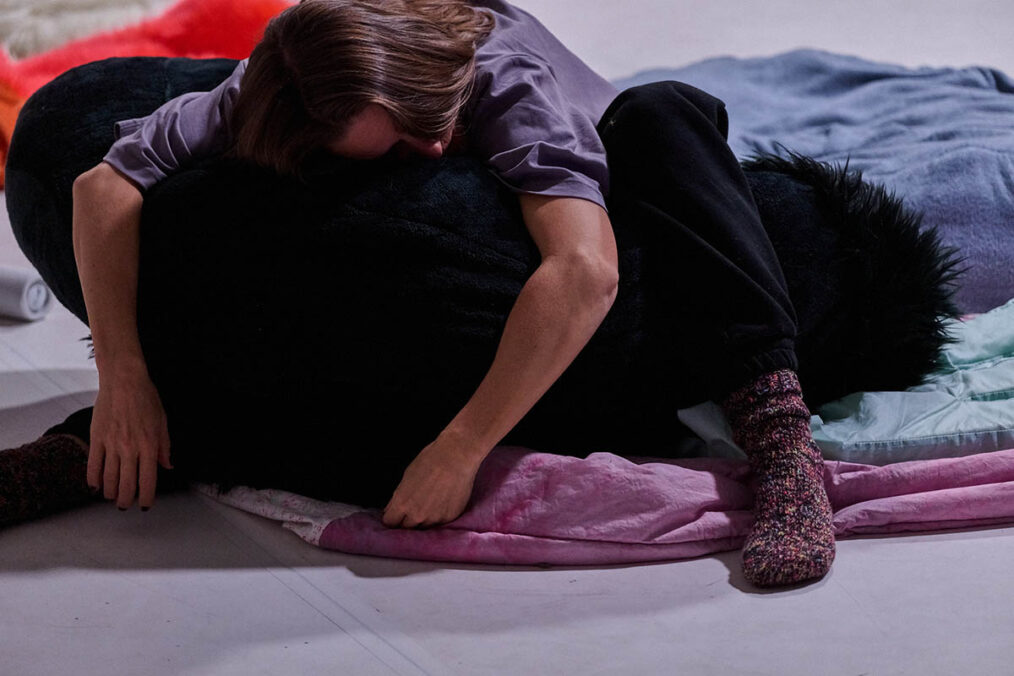
Why was I interested in passivity? Because the multiple crises caused by humans became more and more visible at that time and besides this, I felt more and more tired of nonstop work pressure and all its social and ecological consequences that are linked to this. This is how I shifted through passivity and the lying and resting body toward concepts of retreat and regeneration. I wanted to create performative situations that were inherently regenerative for both the performers and the audience. This intention was especially strong in works like This Is Not the Garden (2022) and Underfoot, where the main emphasis was on the regenerative experience with plants and soil for the visitors.
The regenerative space is also inherent in the idea of safe spaces in padded. At least in my favorite idea of a sheltered space. In my dream scenario these places can never be exhaustive.
Unlike painting, performance often involves working with numerous collaborators. Do you bring your collaborators into the creative process from the very beginning, or does the involvement come later?
There’s an ideal situation, which we never reach (smiles), because the ideal situation would be that I can collaborate extensively with all of them, separately and together as a group, but this is far from reality. Ten, or fifteen years ago we had more time as a group to develop work. I think the introduction of Fair Pay and how much time people generally want and can spend within a process of a project have changed. The production costs have highly increased simultaneously, also because of Fair Pay which is basically a great improvement.
Less time for group research brings stronger hierarchies into the work, which is a pity and also questionable. Time efficiency somehow shapes the work. But I prefer slow processes so much on multiple exchange levels. Anyway, I start researching far in advance before engaging with the performers. I start the rehearsal process with a clear framework of ideas, interests, and contextualization. Without that preparation, there wouldn’t be enough time for performative questions and artistic realization. Twenty years ago, we used to begin all together projects almost from scratch (smiles).
Lygia Clark is a name I found out while reading about your work. What says the name of the artist to you?
Lygia Clark with her background and practice in visual arts, was a pioneer in the sensorial somatic bodywork. The way how she used somatic experience as social encounters had a big influence on my work. Also the healing aspects in a psycho-somatic understanding at the end of her career were remarkable. For me, Clark stands out as a profoundly important figure.
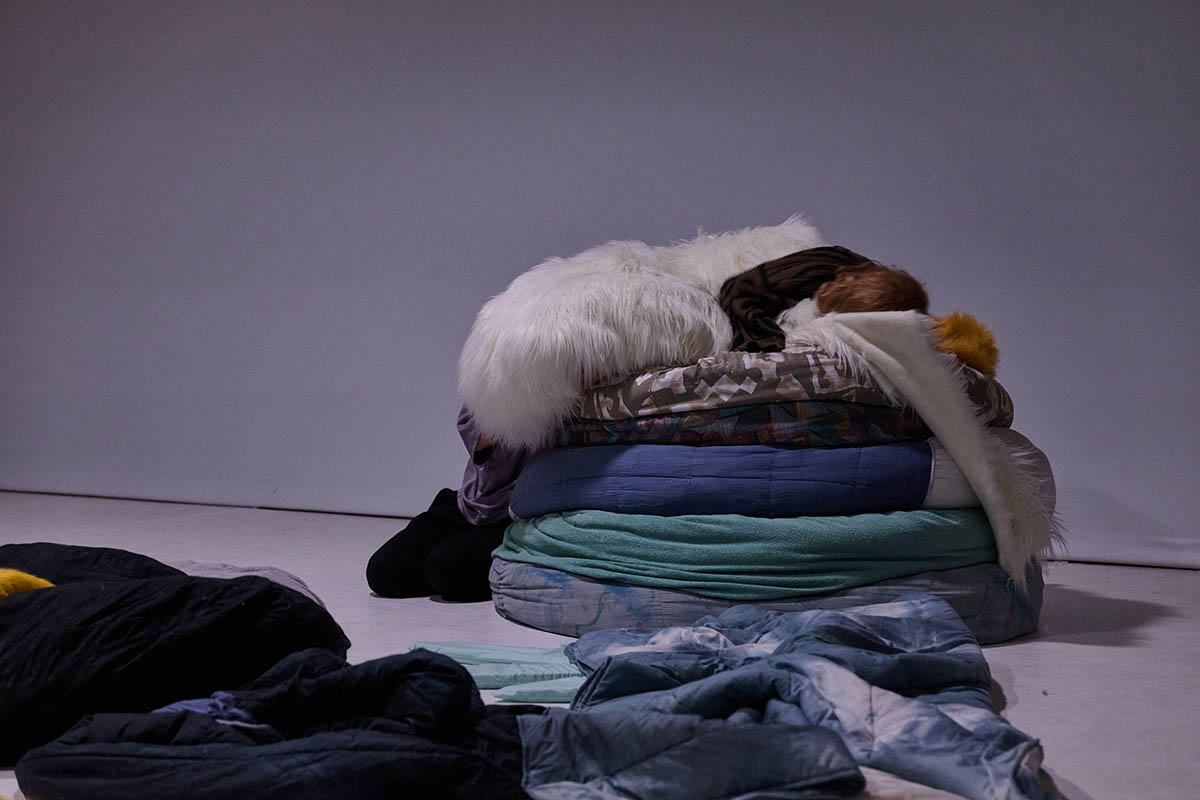
Returning to padded; you speak about nuances instead of extremes, delicacy instead of self-assertion, and the pleasure that awakes from sense of security. I’d love to hear you elaborate on these ideas.
These are big words, aren’t they? But rather than focusing on extremes, I find myself drawn to nuances. Kathrin Busch´s research on weakness and Roland Barthes’s description of self-weakening have thereby been important recourses. Both describe how through powerlessness and weakness, nuances instead of polarities become visible, and how attention is directed to subtleties rather than extremes. The attention to receptivness and maybe even passivity come here into play. Letting go, can´t focus on self-assertion, right? Although I don´t operate with the term weakness in padded I have learned a lot about the possibilities that processes of weakening inhere. The sort of tenderness, softness, slowness and care I am interested in as a performative “language” has something to do with becoming vulnerable and weak. In this sense, extremes are less interesting than little shifts, developments, moves and nuances.
These nuances are mostly slow and often little shifts don’t look on dramaturgy peaks. padded is so to say nearly peakless. Perhaps there is something radical in this?
Lisa Hinterreithner – www.lisahinterreithner.at
Lisa Hinterreithner is a performance artist, who lives in Vienna, Austria. In her works she intertwines bodies and materials and is on the lookout for experimental performance formats that address humans and more than humans likewise. She often invites the audience, performers and objects to be part of a joint performative process. Recently she has explored touch and touchability, specifically between plants and humans. Lisa Hinterreithner’s performances have been shown among others, at Tanzquartier Wien, donaufestival Krems, ImPulsTanz – Vienna International Dance Festival, Galerie 5020, Sommerszene – SZENE Salzburg, as well as in Germany, Denmark and the UK. She is a regular lecturer for Performance and Performance Research at the Dance Academy SEAD in Salzburg, at the Danish National School of Performing Arts in Copenhagen and at the Academy of Fine Arts in Vienna. Lisa Hinterreithner takes part in the transmedia research project Stoffwechsel – Ökologien der Zusammenarbeit‘ at Im_flieger in Vienna.
Erka Shalari is a Vienna-based art writer. Her work is committed to uncovering distinctive artistic positions in contemporary art. The work methodology is strongly influenced by psychology, epistemological works, as well as affects and rituals. She is an International Editor at Les Nouveaux Riches Magazine.



